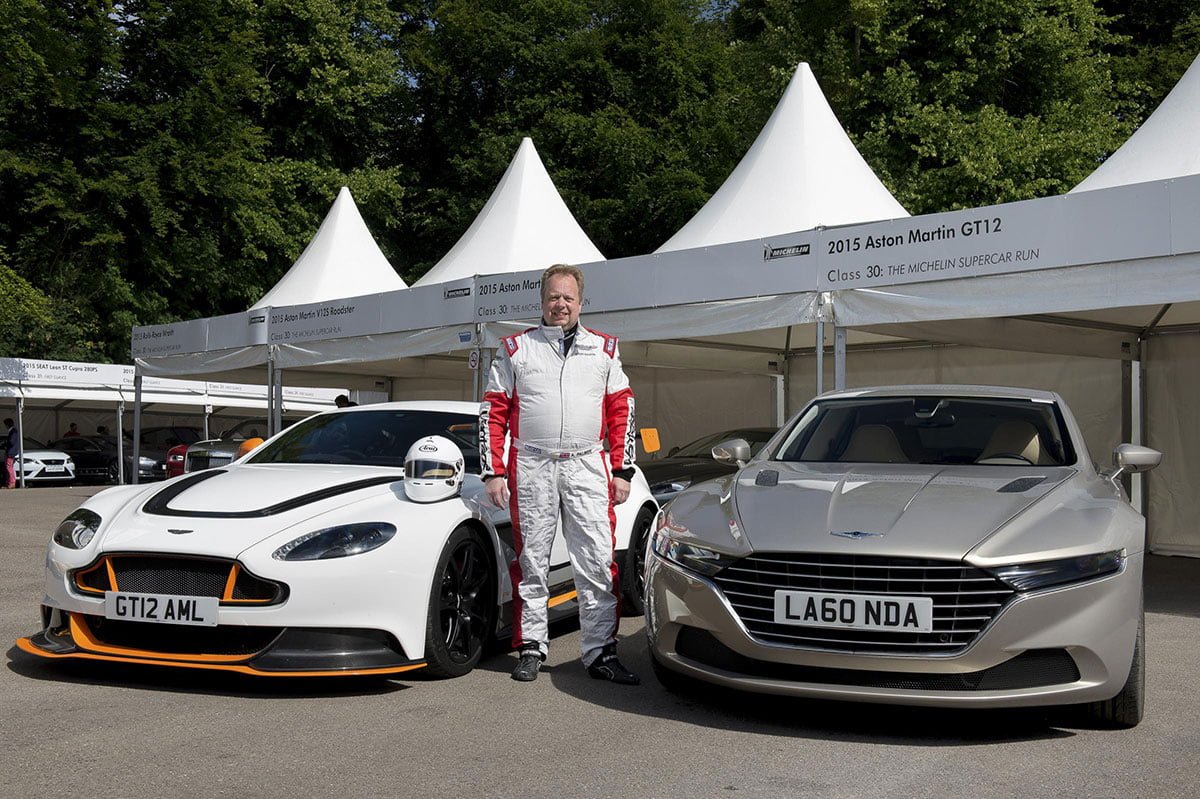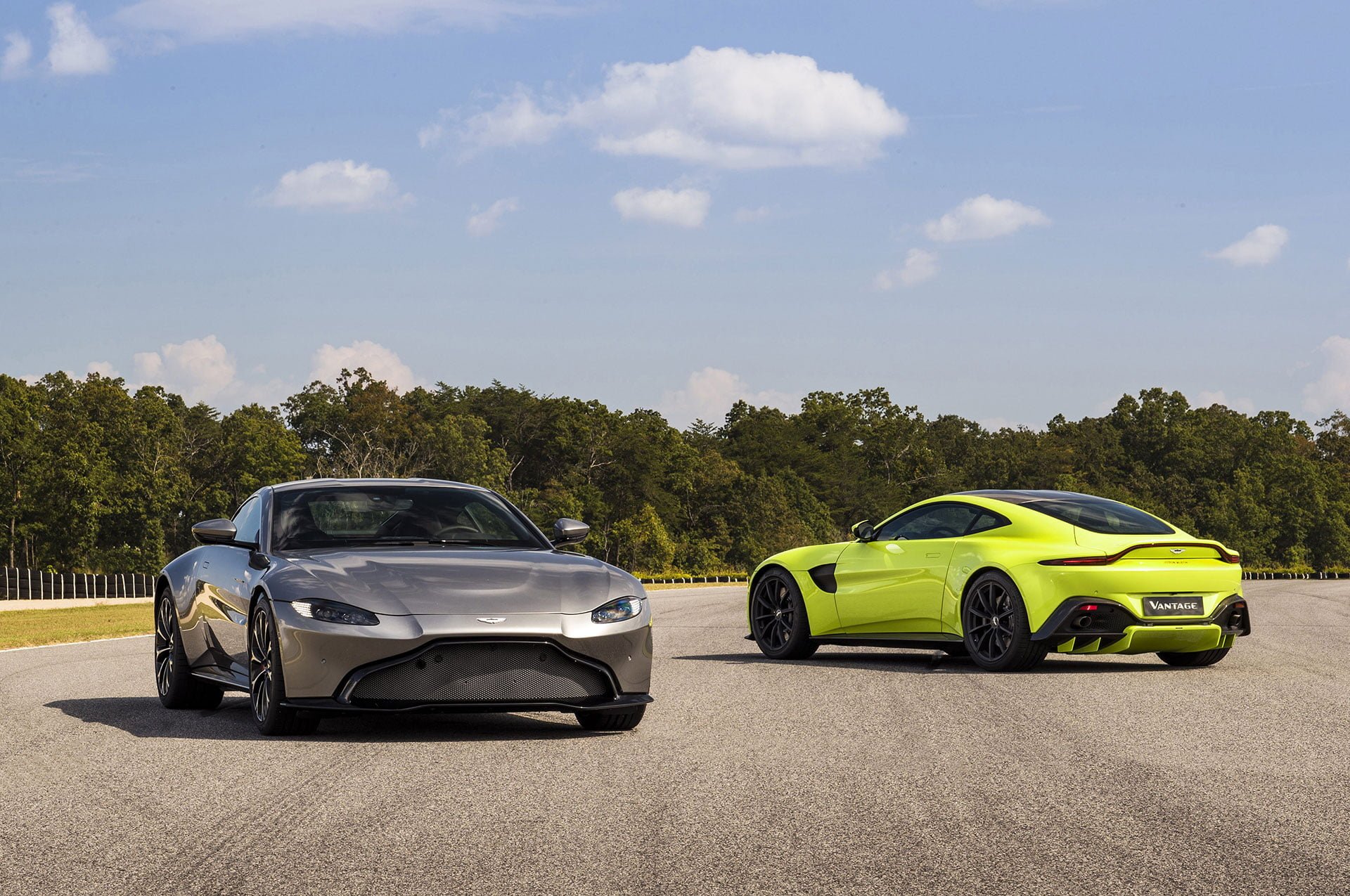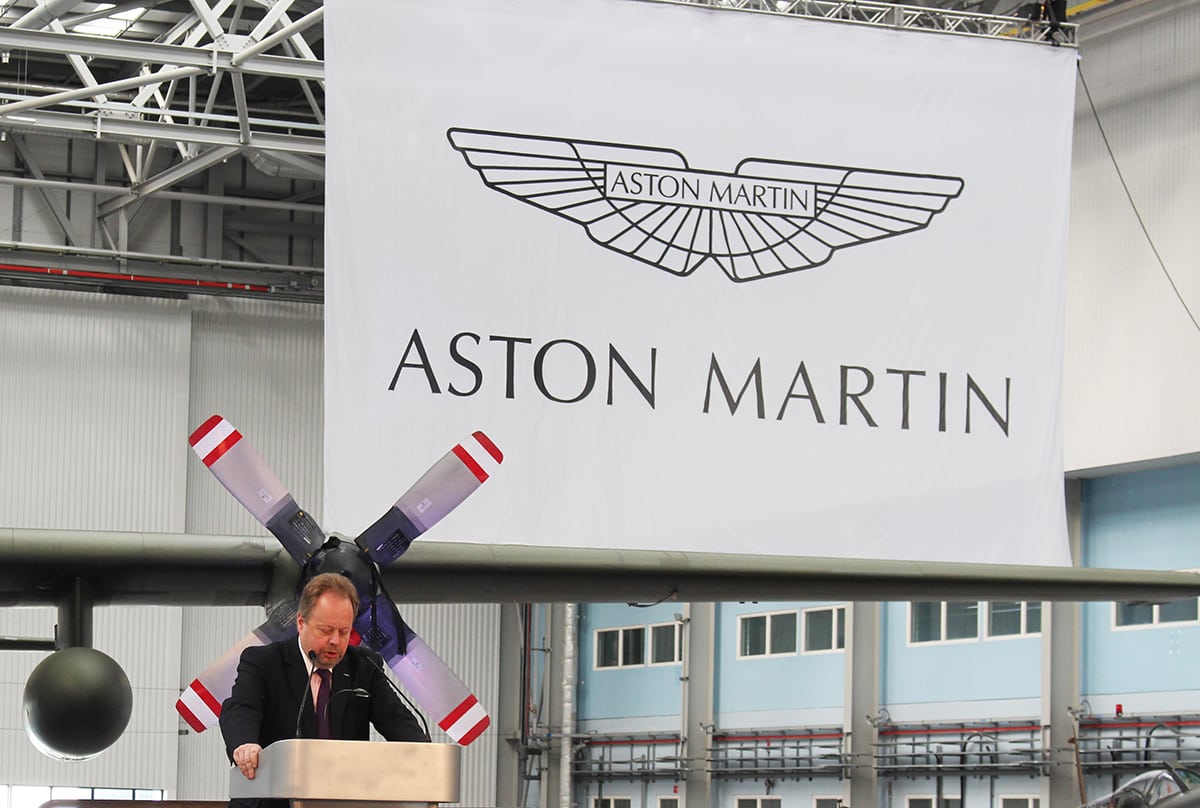Aston Martin CEO Andy Palmer is a total petrolhead – he likes nothing better than to put on a race suit and compete at quite a high level in his company’s products.
And he’s happy to discuss the merits of other classic British names with fellow petrolheads, as this correspondent discovered while viewing the latest TVR at Goodwood a couple of years ago.

Palmer is also, however, a very astute automotive executive, making good use of experience acquired at Austin Rover and then Nissan. He spent 24 years at the latter, many of them in Japan, rising to the position of executive vice president and chief planning officer.
Palmer had always desired to run his own car company, however, and achieved his aim when the Aston Martin CEO post became vacant in 2014. Though he told one media outlet; “when I decided to take this one from Nissan, I was pretty sure people would say I was mad.”

With good reason – when Palmer took up his post, Aston Martin was a maker known mainly as the preferred brand of James Bond – a cachet of declining relevance – and inside the automotive industry as a perennial loss-maker. Back in the 1980s then chairman Victor Gauntlett was famously asked: “How can you make a small fortune out of Aston Martin?” and replied, “Start with a big one.” Palmer himself pointed out that in its 101 years the brand had faced bankruptcy seven times.
He made this comment when launching his ‘Second Century Plan’ – announced virtually before he had sorted his office furniture, and designed to turn a money pit of a car maker into a profitable, successful brand with cars that buyers wanted.
“First priority was stabilisation – we have not always been known for business stability in our 103-year history,” says Philip Eaglesfield, Aston Martin’s President of UK & South Africa.
“We looked at the foundations of the company, organisation, mix of skills and resources to deliver what we wanted to deliver – there was quite a bit of change, it was complex.”

Eaglesfield adds there was a realisation that Aston Martin was trying to run its business globally from its Gaydon headquarters in Warwickshire. “In key markets such as China, we needed to build up local knowledge, product expertise, what works in that market.”
As a result, Aston now has five regional offices – Singapore with a branch in Tokyo, Shanghai, California, Frankfurt and of course the UK.
A major issue was the product range. For more than a decade Aston Martin had presented a pretty stable line-up, but also a somewhat samey one. The ‘VH’ family of products was based around the Vantage and DB9, the DBS developed from the DB9 as was the Vanquish, the Rapide…
“We had an excellent platform with some flexibility but for a long period of time we had cars that were related to one another,” says Eaglesfield. “We had to address some of the criticisms of there not being enough differentiation in the brand.”

The first core product of the Second Century Plan was the DB11, unveiled in 2016 with a Volante cabriolet version added earlier this year.
“This is our GT car, our Grand Tourer,” says Eaglesfield. “It’s developed in the spirit of Aston Martin tradition – performance, refinement and comfort. It’s very suited to very long journeys, with the driver arriving relaxed having enjoyed the experience of the drive.”
Both the DB11 and Aston Martin’s ‘proper’ sports car, the Vantage, use the same base engine, derived from a technical partnership with Mercedes-Benz’s AMG performance division – Daimler does own 5% of the British brand these days. Both are, however, tuned by Aston Martin to present different characteristics both to their original units and between the two models.
You may also like:

Starting from just under £121,000 (compared to the almost £145,000 payable for the least-expensive DB11) the all-new Vantage launched in mid-2018. It remains Aston Martin’s entry-level model, but also its pure sports car, the latest version boasting more aggression in performance, character and styling both over the DB11 and the preceding Vantage.
The third line is the DBS Superleggera, a ‘Super GT’ – also revealed this year and the brand’s current flagship model. While based on the same platform as the DB11 and Vantage, its V12 engine pumps out well over 700hp and the car boasts a £225,000 price tag.
Aston Martin is diversifying in other ways, too – for example placing more importance on special edition models, such as those produced through a long-standing relationship with Italian styling house Zagato, and which command much higher prices.

‘Continuation’ models – remanufacturing classic Aston Martins such as the DB4 GT and hand-building them at Newport Pagnell just like the originals, sell out within days of order books opening. And there are also such mouth-watering future programmes as a forthcoming third hypercar, in the spirit of the £2 million Valkyrie shown at the 2017 Geneva show, and currently known simply as ‘Project 003‘.
Is it working? Well, the brand lost more than £70 million in 2014, having sold just 3,500 cars. Losses in the following two years climbed further, to £163 million in 2016. But last year, as Palmer’s cost-cutting measures and Second Century Plan got into their stride, the decline was arrested and Aston Martin turned in that rare thing in its history, a profit, of £87 million before tax.
In 2018 profits are climbing, boosted by mushrooming sales in such markets as the Americas and the Far East. Aston Martin sold 1,776 cars in just the last three months – an initial target of 7,000 cars in the year is within reach, and within the next 10 years that is expected to double to 14,000.

And the biggest change is yet to come. As your correspondent sampled the latest DB11 and Vantage, Aston Martin was publishing pictures of its virtually complete new production facility at St Athan in south Wales.
Created from three massive Ministry of Defence aircraft hangars, the new plant is significantly bigger than Gaydon, where Aston’s sports cars have been built since 2003, and has allowed the adding of such essentials as a proper test track.
St Athan will be the home of Aston Martin’s future electrification programme – an EV version of the DB9-evolved Rapide sports saloon will appear in strictly limited numbers before the end of 2019. And the revival of the Lagonda luxury badge, debuting at last March’s Geneva Motor Show on a head-turning concept, will happen at St Athan.
Principally, however, the Welsh plant will produce the DBX – Aston Martin’s first SUV, due to be unveiled in production form before the end of 2019 and going on sale in the following year.
In a busy week for Aston Martin, shots of camouflaged versions of the DBX undergoing off-road testing are circulating as these words are written. Even with the disguise it’s clear that this will be a very sporty luxury 4×4, as an Aston Martin should be.

If the experience of such brands as Porsche and Bentley is anything to go by, the DBX will also transform Aston Martin, becoming the brand’s biggest-selling model by some way. Speaking to The Car Expert when St Athan was unveiled in 2017, Palmer said that production of the DBX would likely be between 4,000 and 5,000 a year – in other words, more than doubling the brand’s entire current production.
Palmer and Aston Martin face challenges – a stock market flotation earlier in November has not produced a universally positive response from financial experts, and the Aston Martin CEO is one of the most outspoken on the potential dangers of getting the wrong Brexit deal.
Yet evidence is growing that this thoroughly British brand will finally consign its money pit reputation, and quotes such as Gauntlett’s, to history, and establish itself as a much-admired manufacturer of desirable, always sporty, but versatile cars. Bond would approve…













